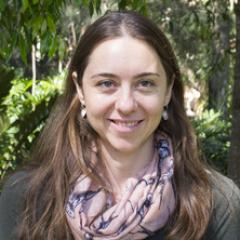Background
Biodiversity is declining globally, and a key threatening process is changing fire regimes (Kelly et al. 2020). Species most threatened by changing fire regimes are specialist species with specific habitat or resource requirements (Kelly et al. 2020). The Glossy Black Cockatoo (GBC), Calytporhynchus lathami, is one such specialist, feeding exclusively on mature she-oak trees (Allocasuarina and Casuarina) (Chapman 2007). Glossy Black Cockatoos are listed as vulnerable under the Environmental Protection and Biodiversity Conservation Act 1999 (Department of Climate Change Energy the Environment and Water 2022). She-oaks display a range of post-fire reproductive strategies, including obligate seeding from serotinous cones and resprouting (Schmidberger and Ladd 2020). Different she-oak species therefore respond differently to fire regimes, ultimately influencing GBC. Obligate seeders are highly sensitive to fire return interval since they are killed by fire and regenerate only from seed; intervals shorter than their generation time will cause local extinction (Pausas and Keeley 2014). Resprouters are less sensitive to fire return interval but might suffer from a lack of adaptability to rapid environmental change because of reduced population turnover (Di et al. 2022; Ojeda et al. 2016; Simpson et al. 2021). Each of these fire-response strategies has potential to limit food resources for GBC. Existing research on she-oaks is limited, with little knowledge on optimal germination conditions, limited geographical range of she-oak responses to fire, and no studies beyond phylogeny of she-oaks – essential knowledge for restoration when the future will present more frequent and intense fires (Dowdy et al. 2019).
Aims
- How do changing fire regimes influence post-fire recruitment of she-oaks?
- At what point do extreme fire conditions impact seed germination in she-oaks?
- How does fire shape genetic structure in she-oaks and which genetic lines will produce the best restoration outcomes under future climate and fire regimes?
Methodology
Seedling recruitment surveys will be conducted along 4m x 50m belt transects with samples taken every 10m using a 1m2 quadrat in National Parks and State Forests and private properties throughout south-east Queensland. These sites cover a range of fire histories within the range of GBC, A. littoralis and A. torulosa (i.e., two of the main feed trees for GBC). Between these points, population structure, in terms of number of seedlings, saplings and adults will be recorded. The presence, abundance, height, diameter at breast height (DBH), recruitment type (basal resprout, trunk resprout, seedling or none), and condition (dead or alive) of trees at different life stages will be recorded. At these sites, cone samples will be collected for germination experiments, testing the responses of A. littoralis and A. torulosa to extreme temperatures and aerosol smoke exposure. Genetic samples will also be collected in the form of leaf tissue samples which will be analysed for Single Nucleotide Polymorphisms (SNPs). Specifically, I will analyse the distribution of genetic diversity in relation to fire history and reproductive mode. I will also analyse the spatial distribution of genetic distance using landscape resistance models, parameterised using spatial data on climate and the fire landscape.
Expected Outcomes
Ultimately, I aim to provide new knowledge on optimal fire management regimes for she-oaks, and strategies for restoration of GBC feed trees to conserve this highly specialised plant-animal interaction. We specifically aim to improve knowledge in relation to GBCs two main feed trees in south-east Queensland, Allocasuarina littoralis and Allocasuarina torulosa, regarding their responses to fire through recruitment and germination processes. We also aim to identify how fire influences genetic lines of these two main feed trees to better inform restoration programs.
References
Chapman, TF, 2007, ‘Foods of the Glossy Black-cockatoo: Calyptorhynchus lathami’, Australian field ornithology, vol. 24, no. 1, pp. 30-36.
Department of Climate Change Energy the Environment and Water, 2022, ‘Calyptorhynchus lathami lathami - South-eastern Glossy Black-Cockatoo’, viewed 2nd February 2023, <http://www.environment.gov.au/cgi-bin/sprat/public/publicspecies.pl?taxon_id=67036>.
Di, B, Firn, J, Buckley, YM, Lomas, K, Pausas, JG, and Smith, AL, 2022, ‘Impact of roadside burning on genetic diversity in a high-biomass invasive grass’, Evolutionary Applications, vol. 15, no. 2, pp. 790-803. doi: https://doi.org/10.1111/eva.13369.
Dowdy, AJ, Ye, H, Pepler, A, Thatcher, M, Osbrough, SL, Evans, JP, Di Virgilio, G, and McCarthy, N, 2019, ‘Future changes in extreme weather and pyroconvection risk factors for Australian wildfires’, Scientific reports, vol. 9, no. 1, pp. 10073-10011. doi: 10.1038/s41598-019-46362-x.
Kelly, LT, Giljohann, KM, Duane, A, Aquilue, N, Archibald, S, Batllori, E, Bennett, AF, Buckland, ST, Canelles, Q, Clarke, MF, Fortin, M-J, Hermoso, V, Herrando, S, Keane, RE, Lake, FK, McCarthy, MA, Moran-Ordonez, A, Parr, CL, Pausas, JG, Penman, TD, Regos, A, Rumpff, L, Santos, JL, Smith, AL, Syphard, AD, Tingley, MW, and Brotons, L, 2020, ‘Fire and biodiversity in the Anthropocene’, Science, vol. 370, no. 6519, pp. 929. doi: 10.1126/science.abb0355.
Ojeda, F, Budde, KB, Heuertz, M, Segarra-Moragues, JG, and González-Martínez, SC, 2016, ‘Biogeography and evolution of seeder and resprouter forms of Erica coccinea (Ericaceae) in the fire-prone Cape fynbos’, Plant ecology, vol. 217, no. 6, pp. 751-761. doi: 10.1007/s11258-015-0539-8.
Pausas, JG and Keeley, JE, 2014, ‘Evolutionary ecology of resprouting and seeding in fire-prone ecosystems’, New Phytolologist, vol. 204, no. 1, pp. 55-65. doi: 10.1111/nph.12921.
Acknowledgements
This project was supported by The Holsworth Wildlife Research Endowment & The Ecological Society of Australia. This project was supported by the Stuart Leslie Bird Research Award & BirdLife Australia.




